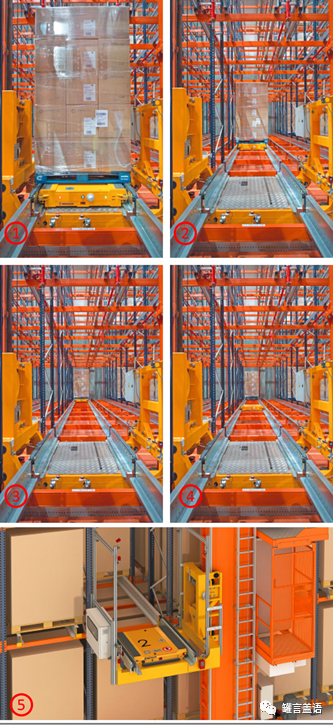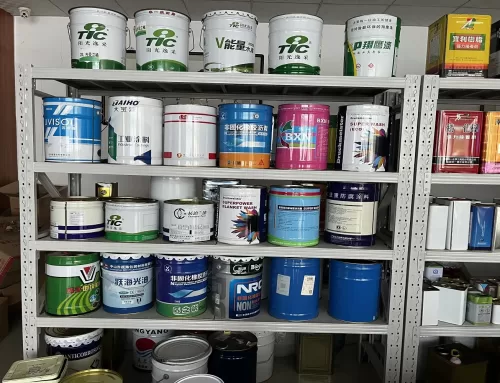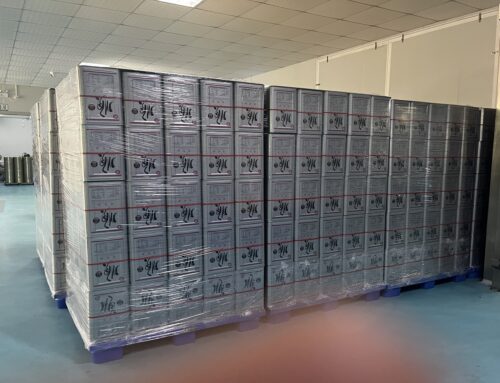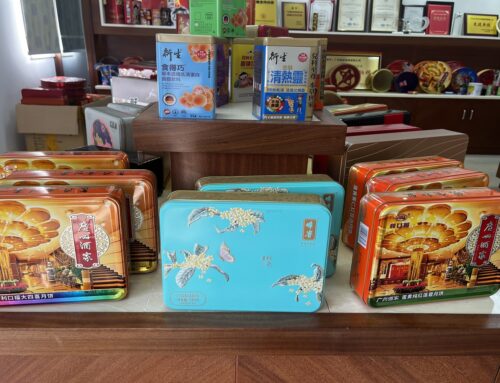With the rise of smart logistics and the rising cost of land and labor, almost all manufacturing companies are considering smart logistics, hoping to improve their logistics management level and reduce their logistics costs through smart logistics.
The metal packaging industry also has to deal with this challenge. Its logistics features include: compared with other industries, there are fewer varieties in the warehouse, and the speed requirements for in and out of the warehouse are relatively low; strict batch number management must realize the first-in-first-out of goods; reduce the number of warehouses operating costs.
Reference case: Smart Dense Library of United Caps
Based on the above characteristics, let’s take a look at how UNITED CAPS, a global benchmark in the design and production of high-performance plastic bottle caps with great reference value for the metal packaging industry, implements intelligent logistics. Headquartered in Luxembourg, with production facilities in France, Belgium, Germany, Hungary, Ireland, Luxembourg and Spain, the company had a turnover of 137 million euros in 2017 and its product portfolio includes more than 600 different closures, through the supply of end-to-end solutions to serve the world market. Strong innovation capabilities combined with advanced custom solutions make it the partner of choice for the world’s leading companies.
Considering the continued growth in market demand, United Covers needed a warehouse that would provide maximum storage capacity and guarantee first-in, first-out for any SKU, while also allowing for maximum and fast flow of goods.
To this end, United Systems has built a densely automated warehouse at its production plant in Werz, Luxembourg. The warehouse can store more than 5,500 pallets, and two stackers provide loading and unloading operations, and each stacker is equipped with a pallet shuttle. Two stacker cranes are responsible for moving pallets between the entry/exit of the warehouse and the aisles of the racks, providing flexibility and tight control of goods in and out in a fully automated environment. There is a rail-guided vehicle (RGV, also known as a rail shuttle car) in front of the warehouse to connect the conveyor with the stacker. When warehouse operators store pallets on the conveyor at the entrance and exit, the warehouse control system (WCS) reads the pallet information and performs internal job scheduling. In addition, all operations in the warehouse are managed and controlled by the Warehouse Management System (WMS).
As shown in Figure 1, the warehouse components of United Cover Company include: high-density system A with pallet shuttle, stacker B, rail-guided vehicle C, inbound conveyor D, outbound conveyor E, empty pallets Dismantling/stacking machine F.

The working principle of the pallet shuttle The working principle of the pallet shuttle is as follows.
First, the pallet shuttle can freely enter and exit the pallet of the stacker, which is located slightly lower than the pallet support level. This level consists of two chains used to fork or drop pallets on the inbound and outbound conveyor.
Second, once the stacker reaches the entrance and exit of the designated lane, the pallet shuttle will lift the pallets placed on it and fork into the lane, so that the pallet can be transported to the designated location farthest from the lane and placed in the lane on the rail.
Third, each shuttle can automatically adjust the center of gravity of the pallets, providing the correct weight distribution of the pallets on the guide rails, and at the same time, helping the stacker to place the pallets in the aisle. The guide rail has a positioning device on the side facing the roadway to facilitate the entry and exit of the shuttle.
Fourth, the charging of the pallet shuttle is done automatically on the pallet of the stacker. The power supply of the pallet shuttle uses super capacitors, which can be charged in seconds and can achieve 24-hour uninterrupted operation.
We can get a glimpse of the workflow of the pallet shuttle via Figure 2. ①shows the pallet shuttle receiving the goods, ②means the pallet shuttle carries the goods and moves in the roadway, ③shows that the pallet shuttle puts the goods in the designated storage position in the roadway, ④means the pallet shuttle returns, ⑤shows The pallet shuttle arrives at the pallet of the stacker for charging.

Figure 2. The cooperation between the pallet shuttle and the stacker. The 5 small pictures show that the pallet shuttle receives the goods from top to bottom and from left to right. The pallet shuttle carries the goods and moves in the roadway. The pallet shuttle places the goods in the roadway. In the designated storage location, the pallet shuttle returns, and the pallet shuttle arrives at the pallet for charging.
The internal structure of the warehouse The warehouse is 12.9m high and 48.9m long. It has two storage lanes with a length of 48.7m. There are two specifications of pallets of 1000mm×1200mm×2550mm and 800mm×1200mm×2550mm. The maximum weight of a single pallet is 350 kg.
The double-column stacker operates cyclically in each lane, and each lane carries a pallet shuttle. The double-column stacker can move at a moving speed of 120 m/min in and a lift speed of 38 m/min.
Front-of-storage conveyors and RGVs In the front-of-storage area, the inbound and outbound pallets are automatically generated through a conveyor link that transports pallets from the start point to the end point. As a result, pallets move quickly without the slightest human intervention, avoiding any logistical errors.
Warehouse operators simply place the pallet on the inbound conveyor, or take it out from the outbound conveyor with the help of a counterbalance forklift.
There is a check point at the inbound port, whose role is to check whether the size, weight and condition of the pallet conform to the inbound specifications. Trays that fail the inspection will be sent to the exception port exactly parallel to it for sorting.
The inbound conveyor chain also includes a pallet removal/stacking machine, which can disassemble the empty pallets from the whole pallet, and stack the recovered empty pallets back into the warehouse.
The direct outbound conveyor, located in the area closest to the loading dock, includes a circular outbound link that removes pallets in sequence according to the required outbound sequence. At the same time, the system is also responsible for organizing and coordinating various operations within the warehouse – from entering the warehouse to final shipment.
WMS controls all operations in input and output processes, locations, inventory, storage processes, batch management and warehouse management based on algorithmic or parametric rules.
In addition, the WMS is directly and always connected to the joint ERP system Axapta (Microsoft Dynamics AX), permanently exchanging information in both directions.
In cooperation with WMS, WCS is responsible for the motion control of stackers, conveyors and other equipment to transport goods from one point of the warehouse to another.
The value of the joint cover intelligent dense library
Through the implementation of the intelligent dense library, United Caps has obtained the following value.
Expanding the storage capacity of the warehouse, the combined intelligent and dense warehouse for lidding has achieved a storage capacity of 5,507 pallets using a warehouse area of 2,380m2.
Increase warehouse throughput The joint cover warehouse realizes fully automated operations through the cooperation of conveyors, RGVs, pallet shuttles and stackers.
Improved Management Thanks to the WMS Warehouse Management System, United Caps can efficiently manage all movements, processes and operations that take place in the warehouse.
In short, through the above-mentioned case of the intelligent dense warehouse of joint cover production, we can clearly see that the implementation of intelligent dense warehouse can not only greatly increase the storage capacity and throughput of the warehouse, but also improve the management level of the warehouse and reduce the number of people in the warehouse. work cost.
Epilogue
As a typical benchmarking enterprise, United Caps Co., Ltd. has a warehouse with “few items in stock, each item has a large amount in stock, and each item has a large amount of single entry and exit, and needs for each batch of products. Guaranteed first-in, first-out” features. These characteristics are also attributes that every metal packaging company has, and the intelligent dense library is a solution specially developed for these characteristics. It can be seen that the intelligent dense warehouse can be regarded as the best choice for the metal packaging industry to realize intelligent logistics.




